United States dollar
United States dollar
United States dollar
The United States dollar (sign: $; code: USD; also abbreviated US$ and referred to as the dollar, U.S. dollar, or American dollar) is the official currency of the United States and its insular territories per the United States Constitution since 1792. For most practical purposes, it is divided into 100 smaller cent (¢) units, but is occasionally divided into 1000 mills (₥) for accounting purposes. The circulating paper money consists of Federal Reserve Notes that are denominated in United States dollars.
Video: Learning Money for Kids/Coin Song for Children/ Money Song for Kids
Since the suspension in 1971 of convertibility of paper U.S. currency into any precious metal, the U.S. dollar is, de facto, fiat money. As it is the most used in international transactions, the U.S. dollar is the world's primary reserve currency. Several countries use it as their official currency, and in many others it is the de facto currency. Besides the United States, it is also used as the sole currency in two British Overseas Territories in the Caribbean: the British Virgin Islands and Turks and Caicos Islands. A few countries use the Federal Reserve Notes for paper money, while still minting their own coins, or also accept U.S. dollar coins (such as the Sacagawea or presidential dollar). As of March 21, 2018, there are approximately $1.63 trillion in circulation, of which $1.59 trillion is in Federal Reserve notes (the remaining $40 billion is in the form of coins).
Coins
Video: "Coins!" by ABCmouse.com
Official United States coins have been produced every year from 1792 to the present.
|
Denomination
|
COMMON NAME
|
FRONT
|
REVERSE
|
PORTRAIT AND DESIGN DATE
|
REVERSE MOTIF AND DESIGN DATE
|
WEIGHT
|
DIAMETER
|
MATERIAL
|
EDGE
|
CIRCULATION
|
|---|---|---|---|---|---|---|---|---|---|---|
|
Cent
1¢ |
penny
|
 |
 |
Abraham Lincoln
|
Union Shield
|
2.5 g
(0.088 oz) |
0.75 in
(19.05 mm) |
97.5% Zn
2.5% Cu |
plain
|
Wide
|
|
Five-Cent
5¢ |
nickel
|
 |
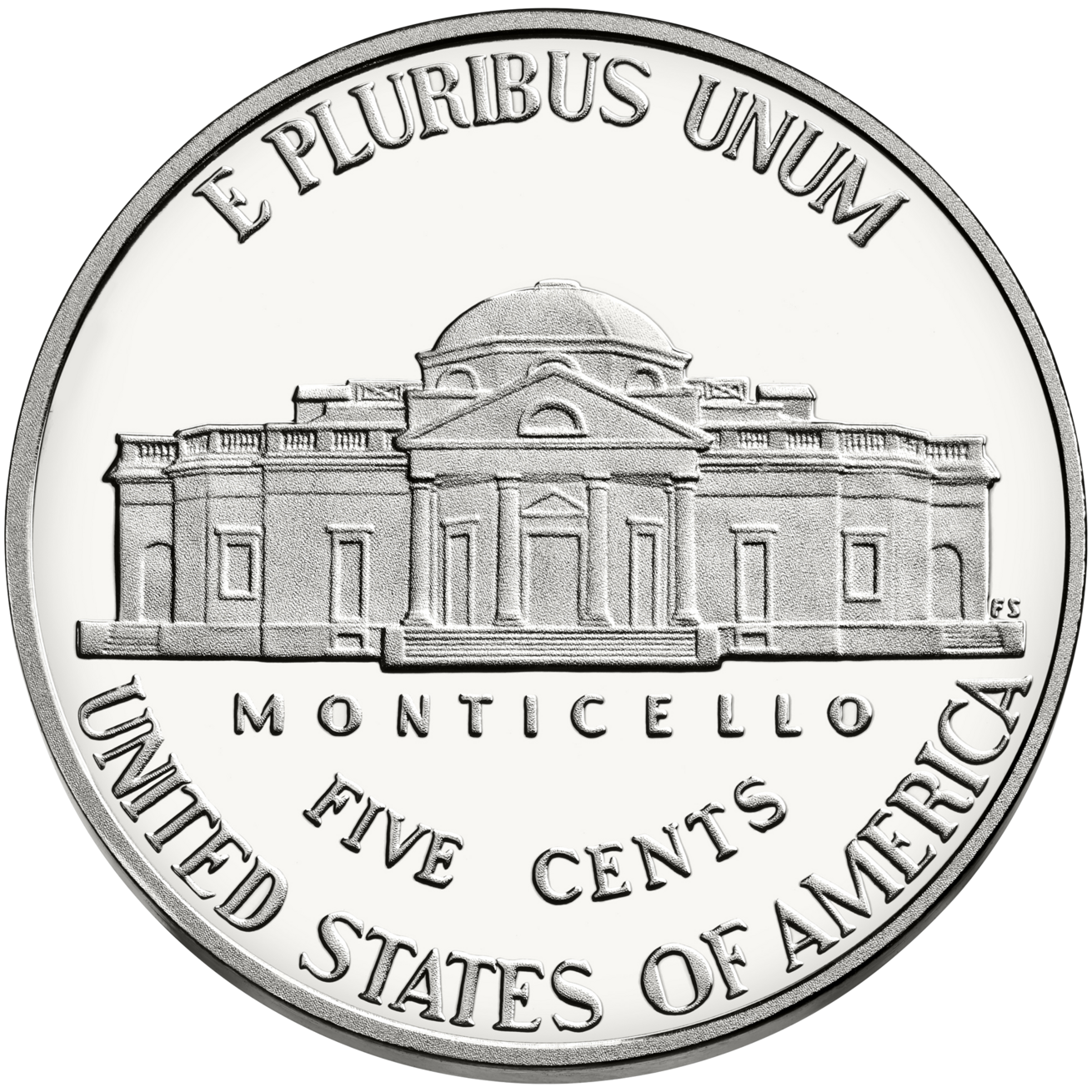 |
Thomas Jefferson
|
Monticello
|
5 g
(0.176 oz) |
0.835 in
(21.21 mm) |
75% Cu
25% Ni |
plain
|
Wide
|
|
Dime
10¢ |
dime
|
 |
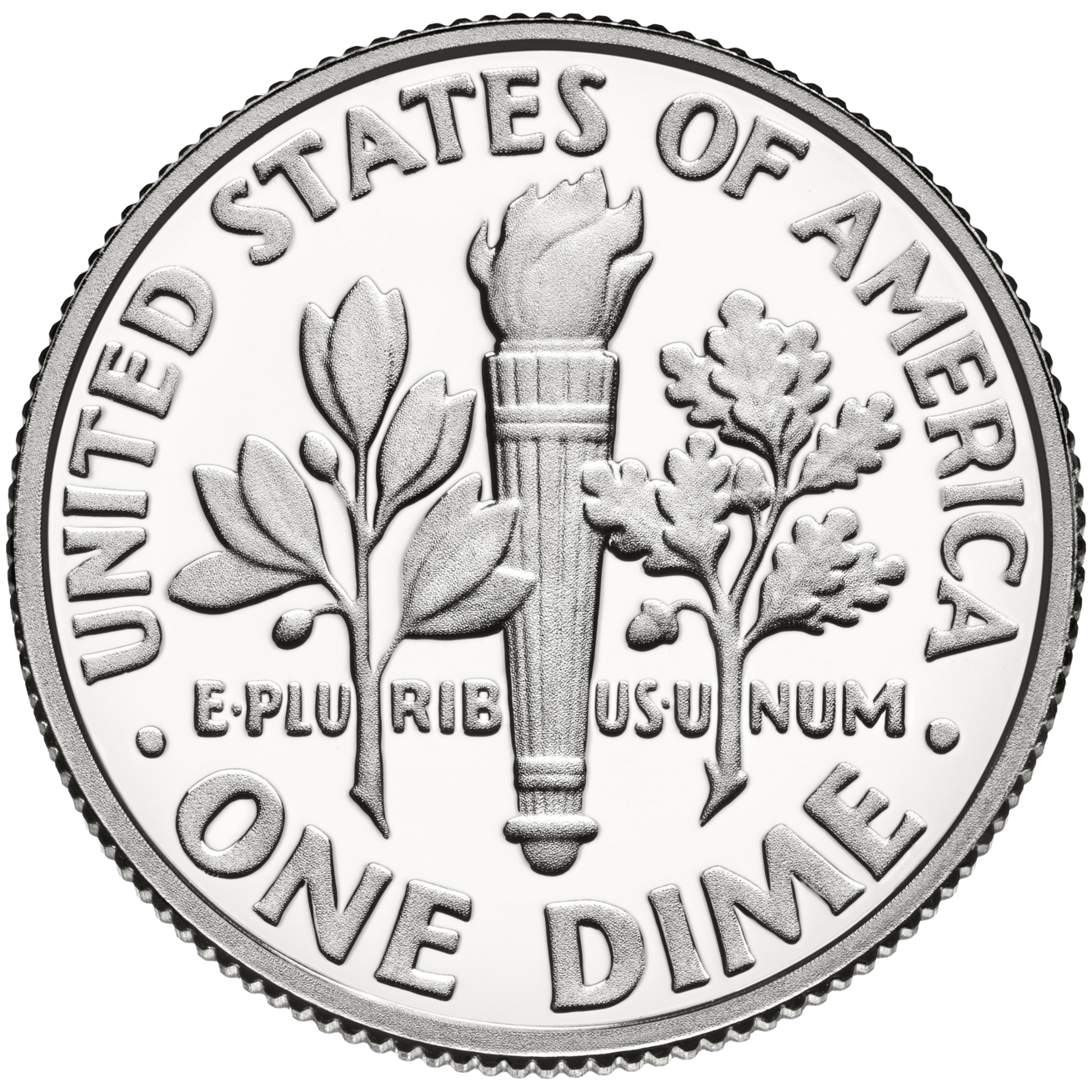 |
Franklin D. Roosevelt
|
olive branch, torch, oak branch
|
0.08 oz
(2.268 g) |
0.705 in
(17.91 mm) |
91.67% Cu
8.33% Ni |
118 reeds
|
Wide
|
|
Quarter Dollar
25¢ |
quarter
|
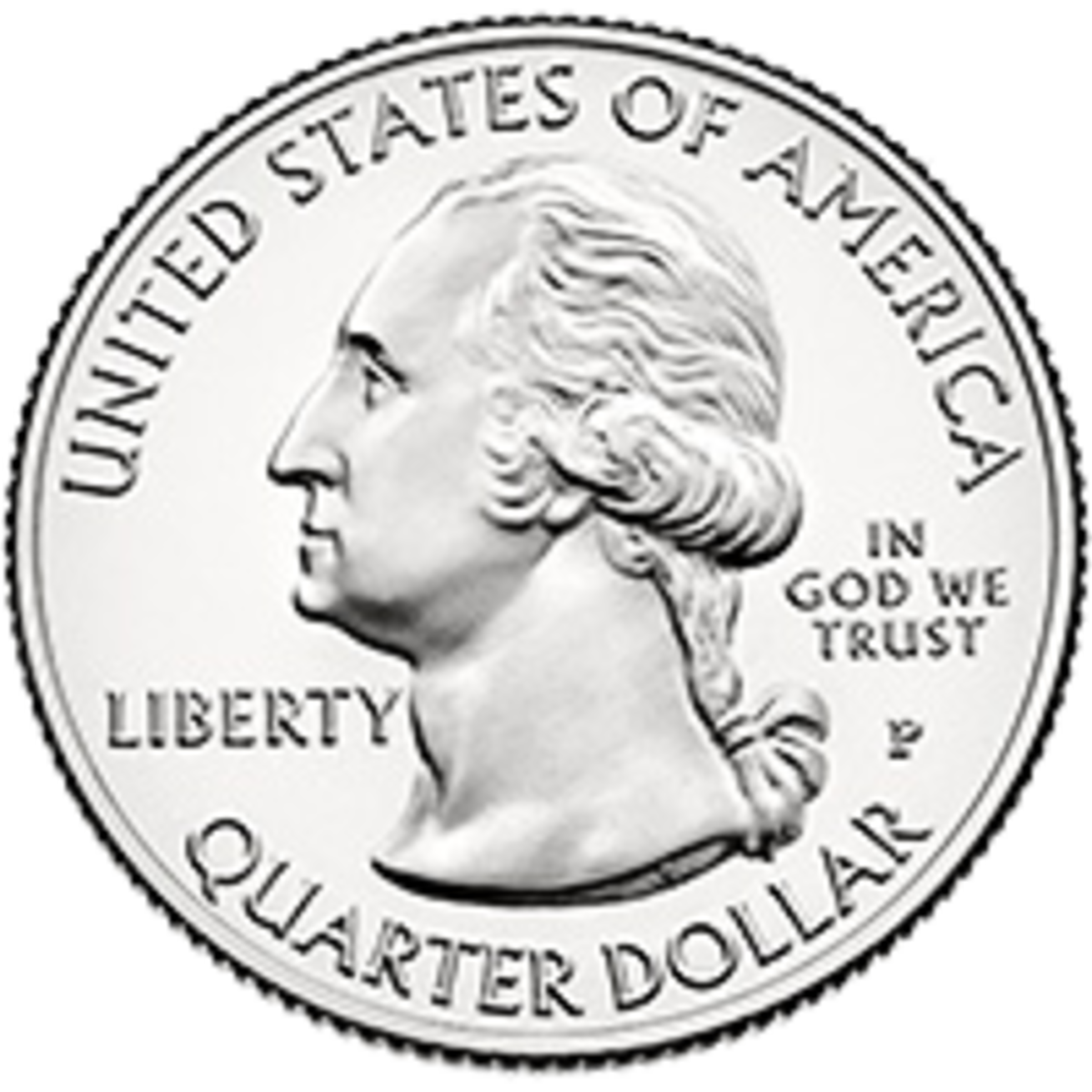 |
 |
George Washington
|
Various; five designs per year
|
0.2 oz
(5.67 g) |
0.955 in
(24.26 mm) |
91.67% Cu
8.33% Ni |
119 reeds
|
Wide
|
|
Half Dollar
50¢ |
half
|
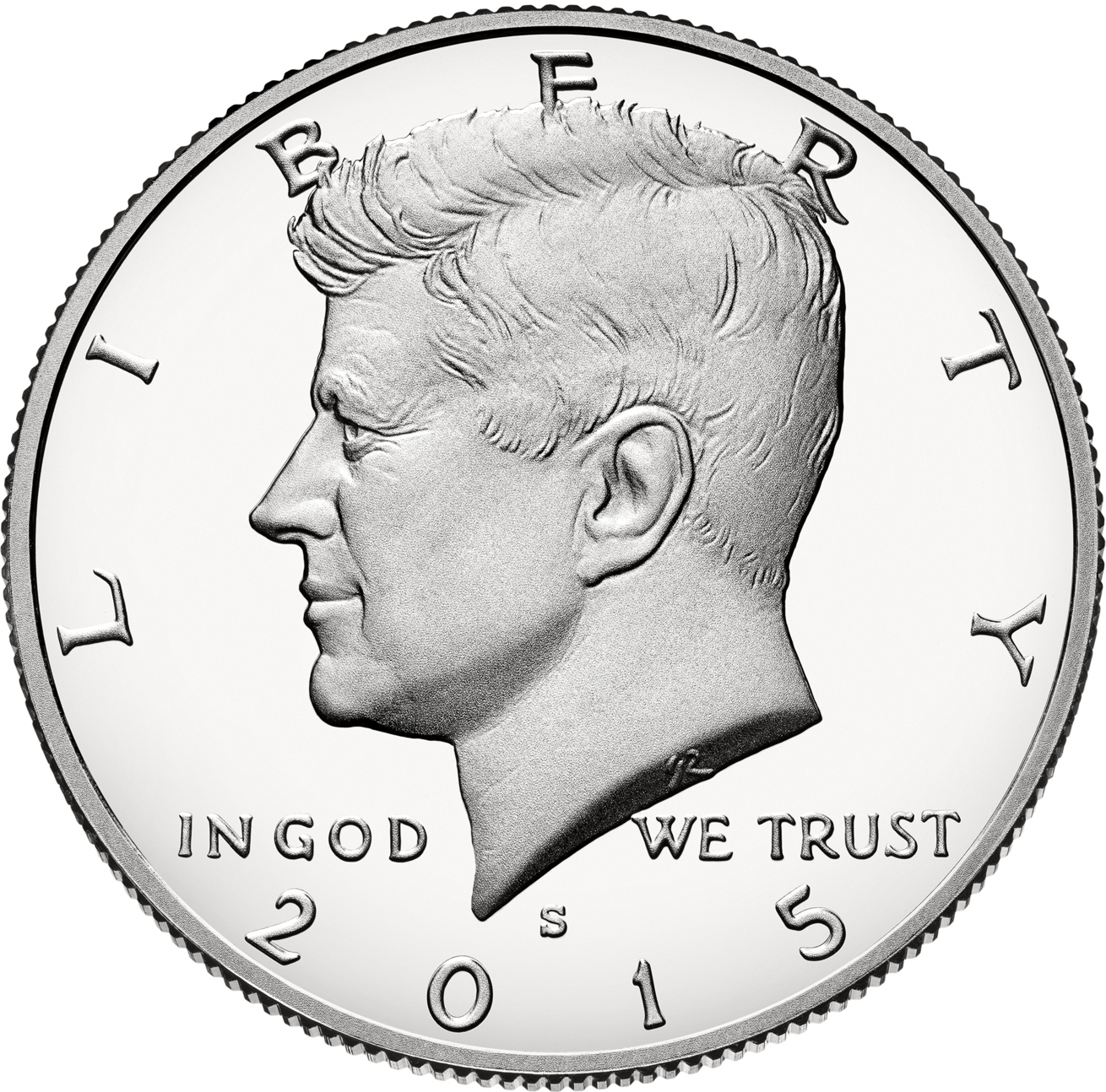 |
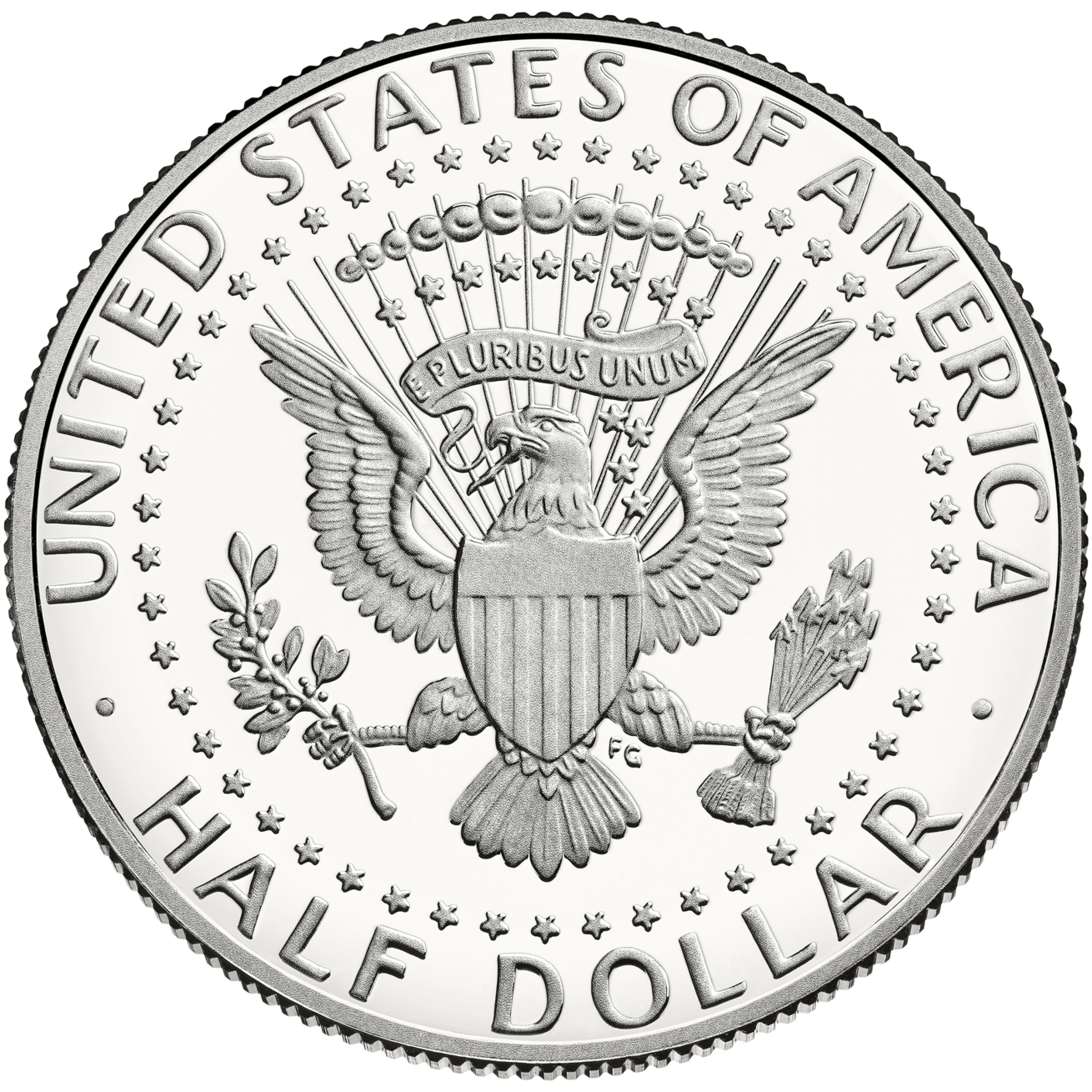 |
John F. Kennedy
|
Presidential Seal
|
0.4 oz
(11.34 g) |
1.205 in
(30.61 mm) |
91.67% Cu
8.33% Ni |
150 reeds
|
Limited
|
|
Dollar coin
$1 |
dollar coin, golden dollar
|
 |
 |
Profile of Sacagawea with her child, Jean Baptiste Charbonneau
|
Bald eagle in flight (2000–2008), Various; new design per year
|
0.286 oz
(8.10 g) |
1.043 in
(26.50 mm) |
88.5% Cu
6% Zn 3.5% Mn 2% Ni |
Lettered
|
Limited
|
Banknotes
|
Denomination
|
FRONT
|
REVERSE
|
PORTRAIT
|
REVERSE MOTIF
|
FIRST SERIES
|
LATEST SERIES
|
CIRCULATION
|
|---|---|---|---|---|---|---|---|
|
One Dollar
|
 |
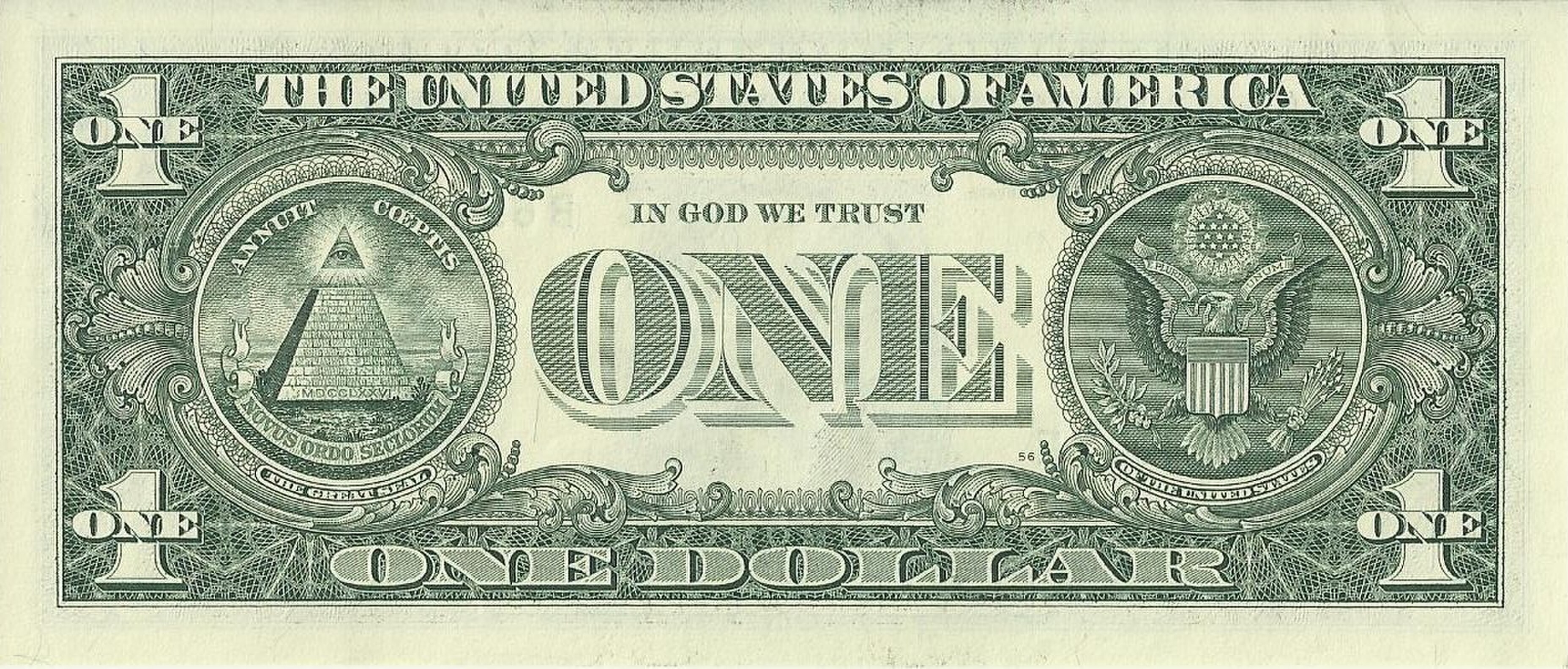 |
George Washington
|
Great Seal of the United States
|
Series 1935
|
Series 2017[50]
|
Wide
|
|
Two Dollars
|
 |
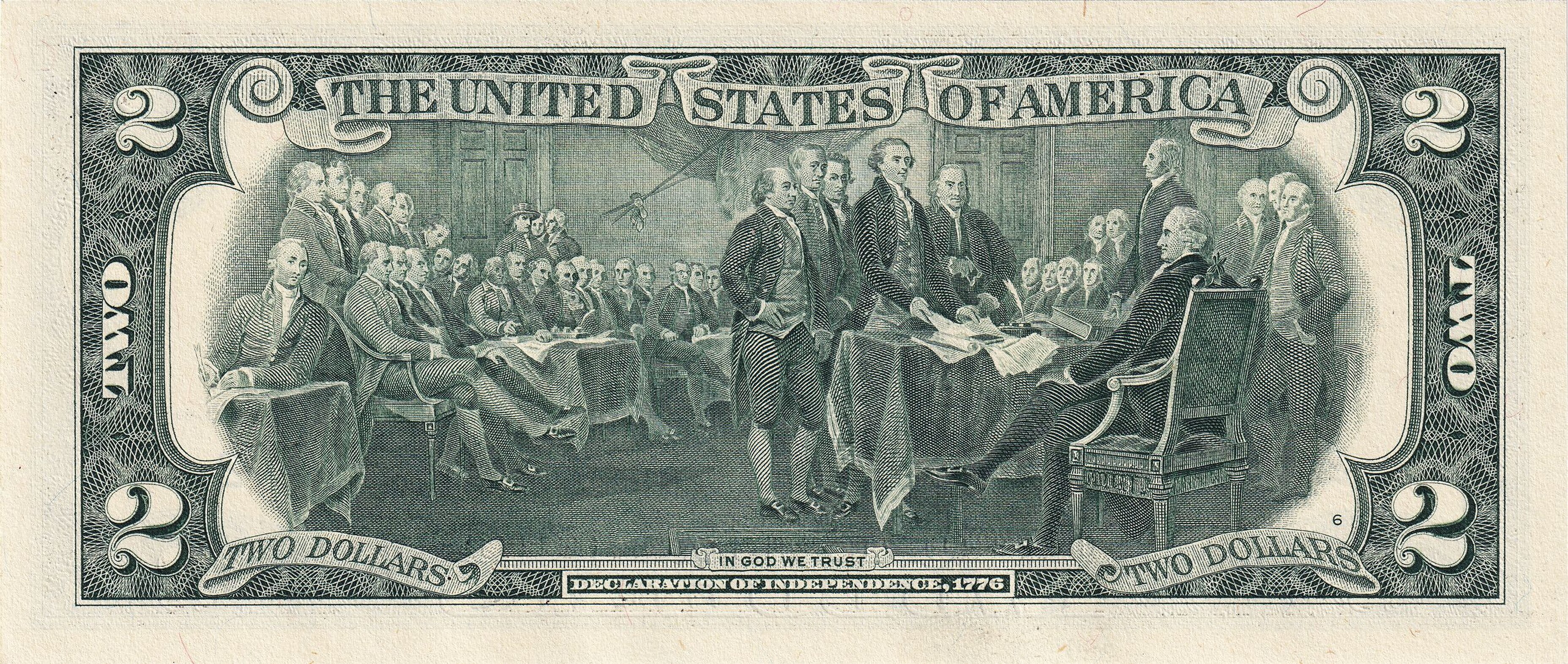 |
Thomas Jefferson
|
Trumbull's Declaration of Independence
|
Series 1976
|
Series 2013
|
Limited
|
|
Five Dollars
|
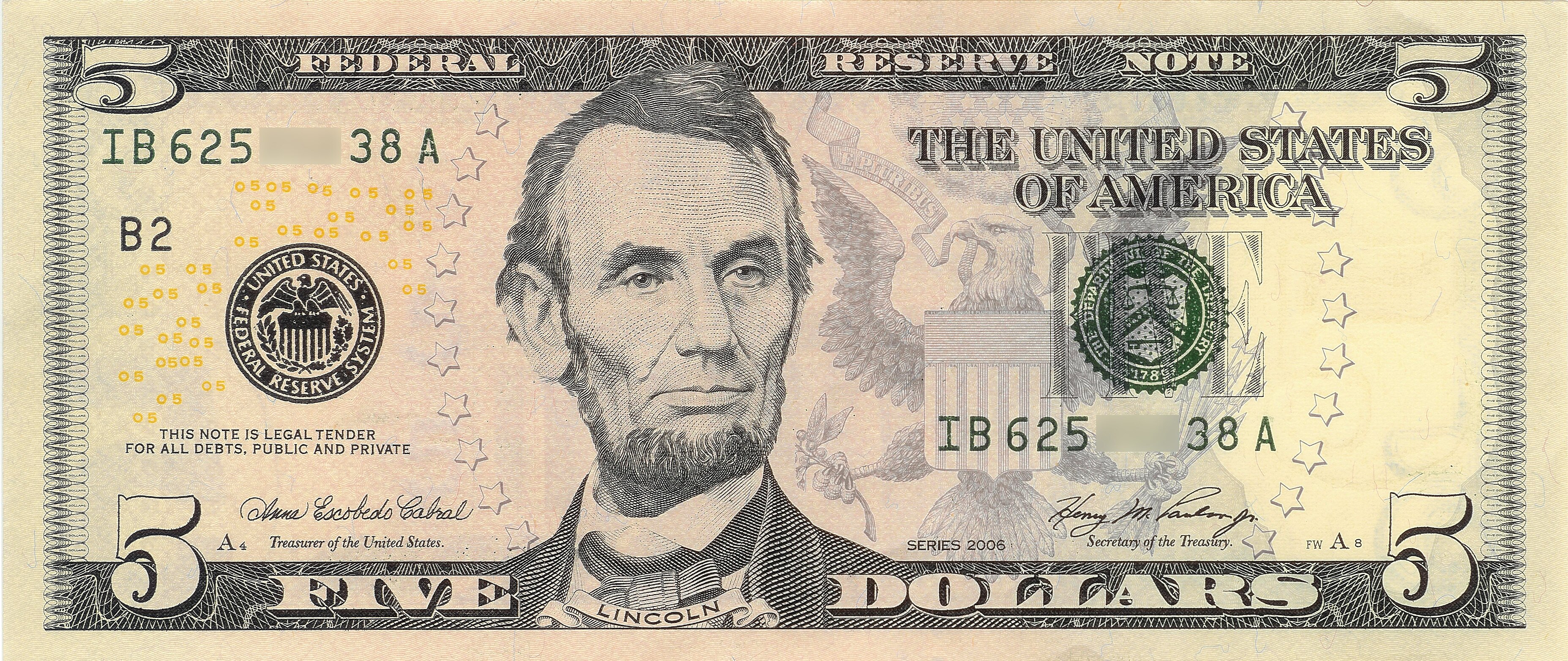 |
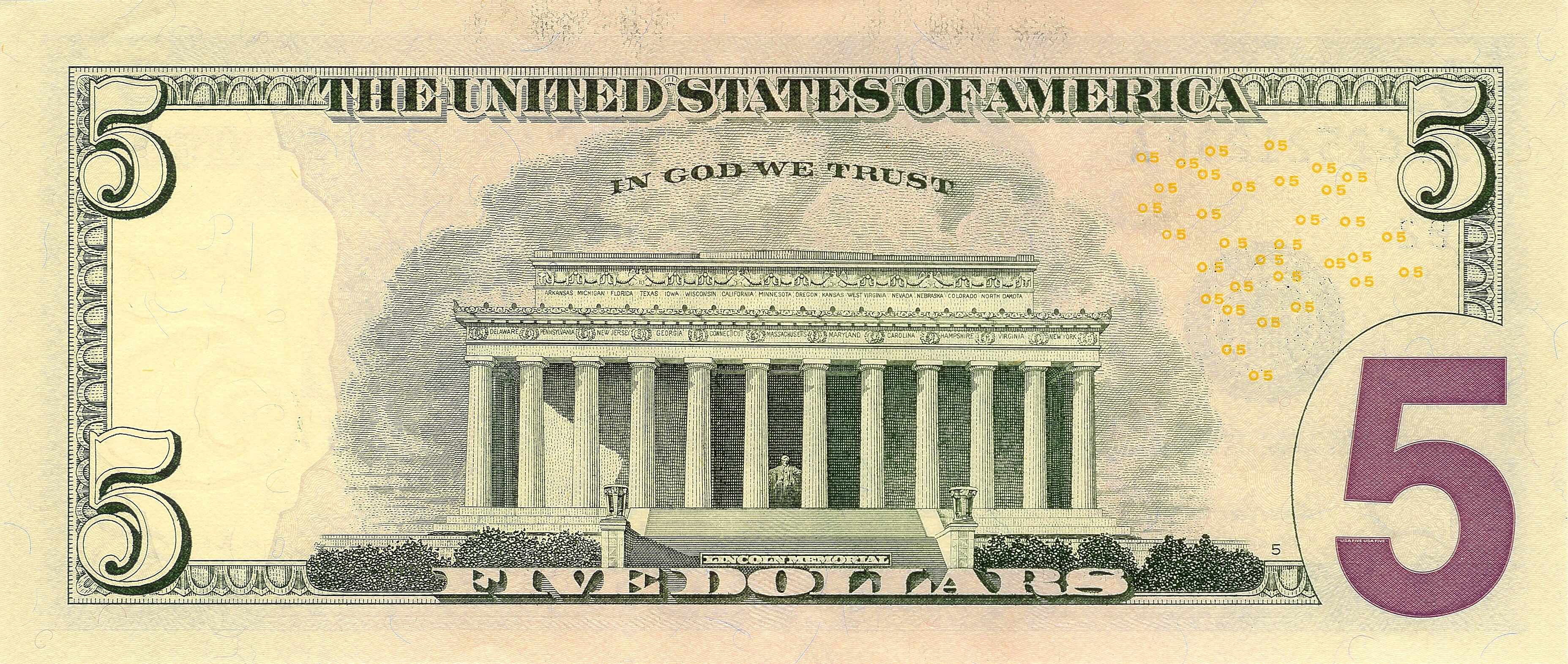 |
Abraham Lincoln
|
Lincoln Memorial
|
Series 2006
|
Series 2013
|
Wide
|
|
Ten Dollars
|
 |
 |
Alexander Hamilton
|
U.S. Treasury
|
Series 2004A
|
Series 2013
|
Wide
|
|
Twenty Dollars
|
 |
 |
Andrew Jackson
|
White House
|
Series 2004
|
Series 2013
|
Wide
|
|
Fifty Dollars
|
 |
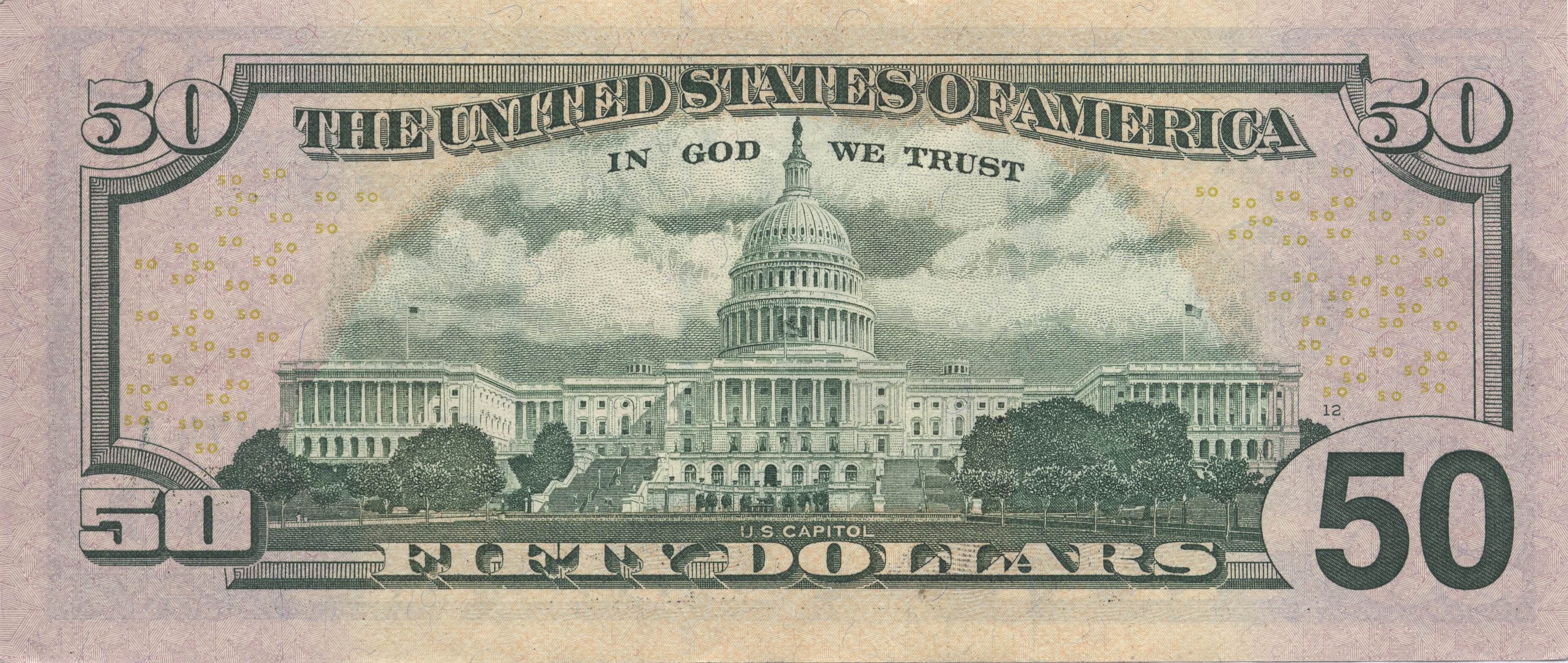 |
Ulysses S. Grant
|
United States Capitol
|
Series 2004
|
Series 2013
|
Wide
|
|
One Hundred Dollars
|
 |
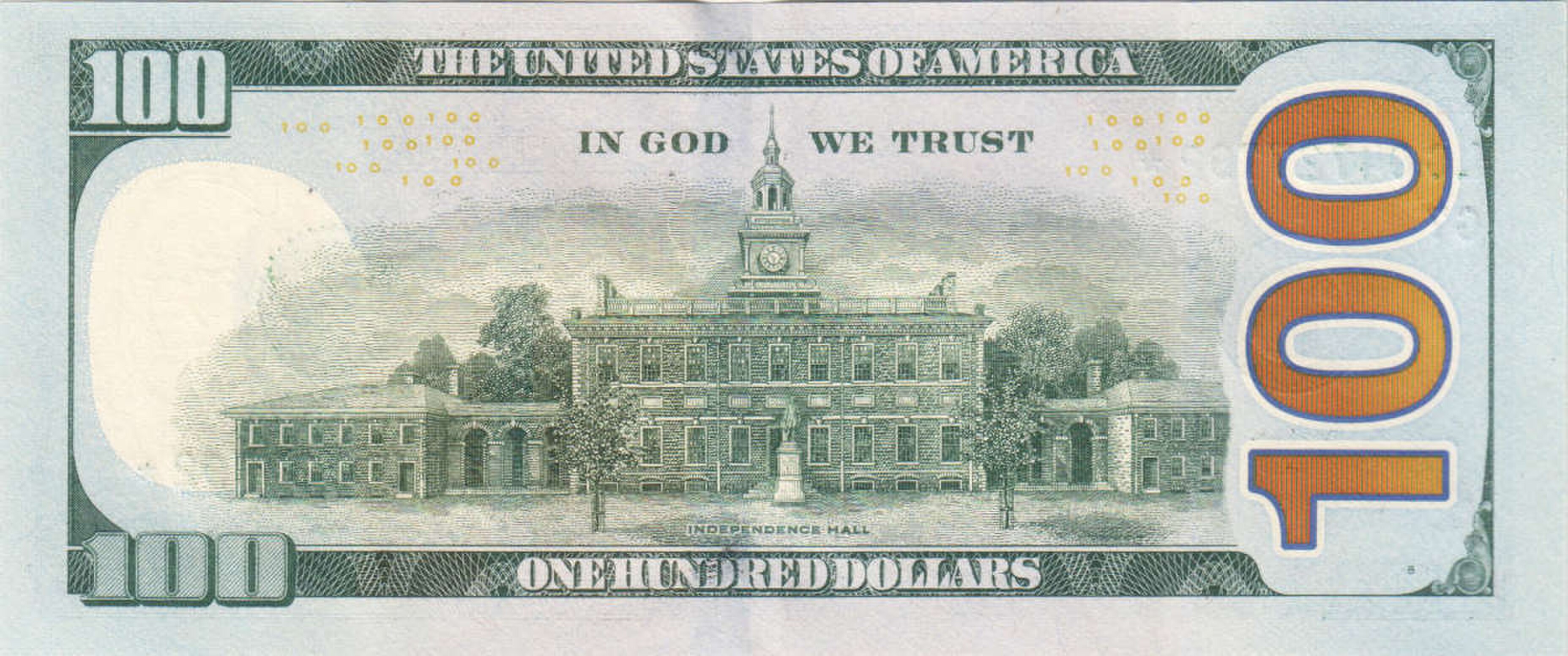 |
Benjamin Franklin
|
Independence Hall
|
Series 2009
|
Series 2013
|
Wide
|
The U.S. Constitution provides that Congress shall have the power to "borrow money on the credit of the United States". Congress has exercised that power by authorizing Federal Reserve Banks to issue Federal Reserve Notes. Those notes are "obligations of the United States" and "shall be redeemed in lawful money on demand at the Treasury Department of the United States, in the city of Washington, District of Columbia, or at any Federal Reserve bank". Federal Reserve Notes are designated by law as "legal tender" for the payment of debts. Congress has also authorized the issuance of more than 10 other types of banknotes, including the United States Note and the Federal Reserve Bank Note. The Federal Reserve Note is the only type that remains in circulation since the 1970s.
Video: Banknote World's TOP 5 Most Interesting Banknotes!
- Log in or register to post comments
- Email this page


